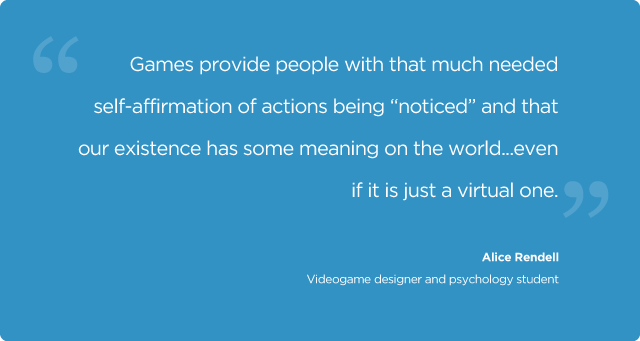Some Lessons Small Business Owners Can Take from the Explosion in Popularity of the Gaming Industry
The generation of people that are currently in their late 20s or early 30s are considered by some to be the first generation of “gamers” – that is, the first generation of citizens that have grown up in a world where videogames have always been a major contributor to the popular culture. Sure, some might say that the generation of kids that grew up with Pong and Asteroids might have a claim to this moniker, but it wasn’t until the mid to late-1980s until video games were no longer seen as a dorky, nerdy “fad” that would soon go the way of Cabbage Patch Dolls, Teddy Ruxpins, and Wuzzles.
The evolution of the gaming industry
Games have come an impossibly long way since the halcyon 8-bit years of the Nintendo Entertainment System and Sega Master System. The current generation of PC and console games feature nearly photo-realistic graphics. A-list Hollywood actors and actresses commonly lend their voices to videogame characters. People from all over the world play either with or against each other in a variety of ways online.
With the advent of handheld gaming devices, social networking, and smartphones, people are playing games constantly – not just when they’re at home in front of their TV or computer screen.
People want to be recognized, games allow for this
The explosion in popularity of the gaming industry is in no doubt partially due to the technological advances of the past few decades and the acceptance of the practice itself in mainstream society. But a large part of it has stemmed from humanity’s innate enjoyment of playing games, something we’ve done for millennia. Videogame designer and psychology student Alice Rendell stated in a recent blog on why we game:
Many cultures completely revolve around this notion of the ‘self’ and our society has been set up to honor and notice the individual. This is why we strive to be the best in our respective fields, or apply to reality TV shows like X-Factor, so we become ‘someone’ and therefore leave our mark on the world. Unfortunately only a small percentage of the population will leave enough of a mark to be remembered hundreds of years from now, and for the Average Joe (i.e.: most of us), there are limited opportunities to prove their self-existence. This is where games come in.”
Ways to gamify your business
It didn’t take long for savvy business owners and marketers to tap into this desire to game. McDonald’s Monopoly promotion is a huge boon for the fast food giant since they incorporated the popular Hasbro game into a sweepstakes over 25 years ago. Both Burger King and Doritos have cut out the middleman and gone directly into the publishing route, putting out several cheap (yet surprisingly addictive and polished) digital download videogames for Xbox LIVE Arcade and PlayStation Network. And Foursquare’s entire model is based on our insatiable desire to compete against our friends and “win” the mayorship of our favorite hang outs. What takeaways are there from this surge in competition and gaming for business owners?
1. Foursquare
First and foremost, you should seriously consider creating a meaningful presence on Foursquare. As one of the most popular sites in the world with a current Alexa rating of 635, Foursquare boasts 33 million active users. And those users are among the most fiercely competitive groups of potential customers, who will often go to great lengths to earn badges and bragging rights. But it’s not just enough to have a profile on Foursquare where your customers can check-in – you’ll need to come up with fun and innovative ways to make Foursquare part of the experience of interacting with your business.
Think about creating a loyalty marketing campaign specifically for Foursquare, or better yet, implement Foursquare into your current loyalty reward programs. Give your customers additional points or rewards whenever they check in at your business. Offer up special prizes for customers who unlock badges, and dole out big prizes to whoever becomes your newest mayor. Consider kicking off and promoting a “Foursquare Day” where if people come in and check in on a designated day, they can earn specialized rewards (double points, specific prizes, etc.). And if your business doesn’t not have a physical location, fret not – there are still ways to utilize Foursquare and tap into its thriving community.
You can create a brand page that can be “followed” on Foursquare, and as long as your page is consistent with your brand, you can provide engagement to your followers. Mashable’s Lauren Dell highlighted The History Channel’s successful Foursquare presence: “Since The History Channel is not a physical location, it has a brand page that can be ‘followed.’ When users check in to sites like the Highline in NYC or the Tower of London, a tip from The History Channel pops up, explaining some tidbit or fun fact about the background of the site. The tips are informative conversation starters — fun little nuggets to consume. And while it may not get people watching The History Channel, it makes history — its bread and butter — accessible and fun. This is a win, since many brands are on social media in order to be more accessible to consumers.”
2. Create your own game
Another fantastic option to consider taking advantage of to bring out the gamer in your customers is to have an actual game – either on your company’s website, physically in your business, or both – that your customers can play. Let’s start with the former: creating a game on your website that your visitors can play is something many companies undertake.
Online games on your website
The thought is to engage people while they’re on your page, give them a good time to associate a positive experience with your brand, and hopefully, get them to share the game with their friends. Unless your business is game design, you will likely have to outsource this to a third party, so think carefully about what you want to achieve with the game – make sure that it resonates with your brand somehow, and think about how you can dovetail it with your actual business (e.g. – “Beat the final boss and come in to earn a 10% discount on your purchase”).
In 2010, PETA released a Flash and downloadable game entitled “Super Tofu Boy”, as a parody to the exceedingly popular “Super Meat Boy” that was released just a few weeks prior. While not as polished or deep as the proper game, the parody was nonetheless fun and engaging, and it received a ton of press and shares. While the amount of people that turned vegan or vegetarian after playing the game is questionable, what isn’t is the amount of buzz and awareness PETA received from the game.
Games at your physical store location
Many brick-and-mortars will also have a kiosk or game station set up at their business to encourage people to interact. The same brand integration as the above online examples should still apply, but the connection can be more direct as the customer is a physically captive audience. A trivia question format is a popular option, and enabling customers to put their name next to their high score feeds into our competitive nature. Questions could even be about the physical business itself (e.g. – “What business is on the floor below us?” or “How many beers do we have on tap?”), or the game could be more like a scavenger hunt in nature. It’s a great opportunity to educate your customers about your business and/or philosophy, and as long as the game is entertaining and there is some incentive for playing, should be a popular option for your walk-ins to partake in.
Another aspect that could be extracted from our desire for competition and to leave our mark is to allow your customers to make meaningful and lasting decisions that impact your business. That is not to say that you prop up a Suggestion Box and implement each idea that comes in, but rather position these suggestions as more of a contest. Your customers can submit their ideas (either in person or online), and the one that is voted most popular is declared the winner (e.g. – the recent Lays potato chip contest that allowed customers to submit ideas for what the next flavor should be and have the top choice selected through voting).
This could be seen as a win-win-win: first, you are in essence polling your customers to see what they would want to add, remove, or change about your business or its products; second, you are encouraging them to interact with your brand and evangelize it through their spheres of influence by trying to seek votes for their entries; and third, you are allowing those that want to win the ability to do so if their idea has merit and they work to spread the word.
Adding some sort of gaming elements to your business (also known as “gamification”) is a great way to interact with your customers (and potential customers) and to disseminate your brand in an interactive and entertaining way. There are a wide variety of ways to carry it out, but as long as there is an incentive for people to get involved, it lines up with your brand and your message, and is compelling to play through, there should be no shortage of people wanting to jump in and press start.






[…] Adding some sort of gaming elements to your business is a great way to interact with your customers and to disseminate your brand in an interactive and entertaining way. […]